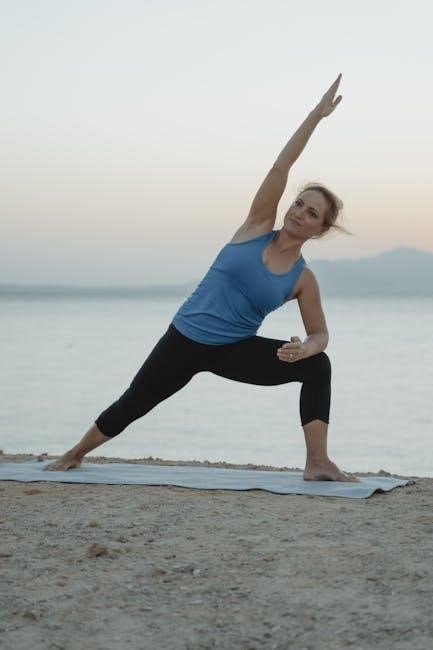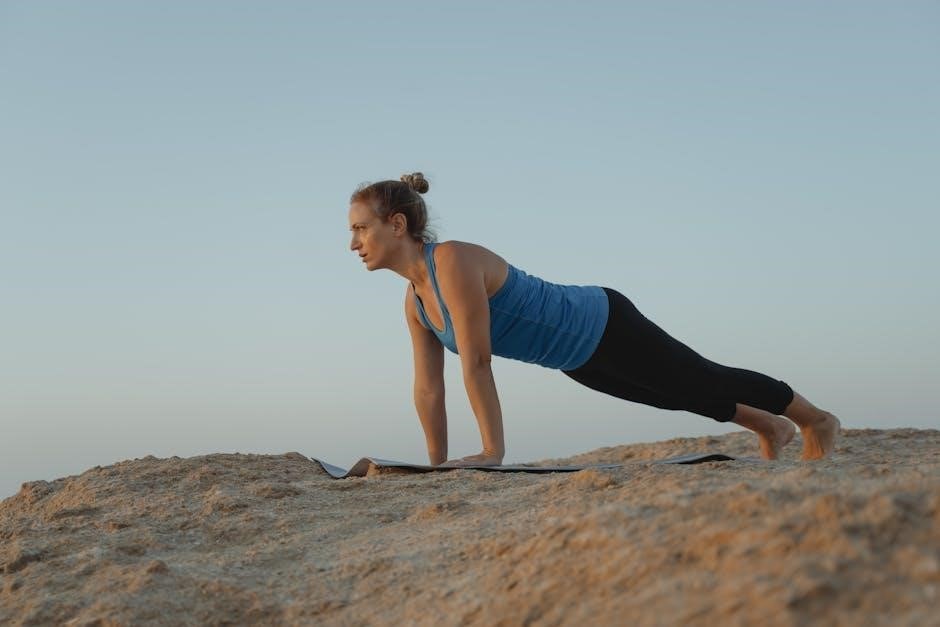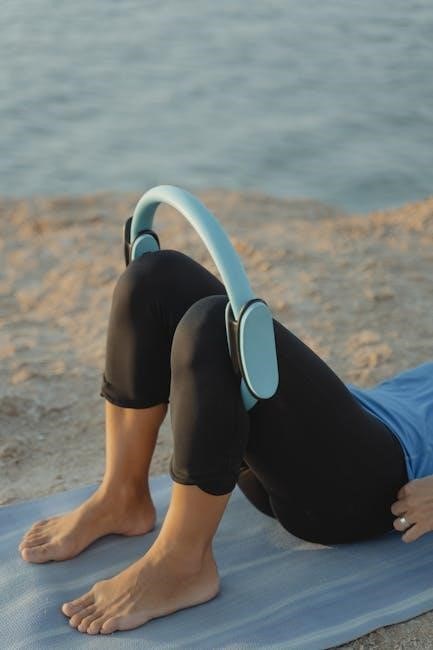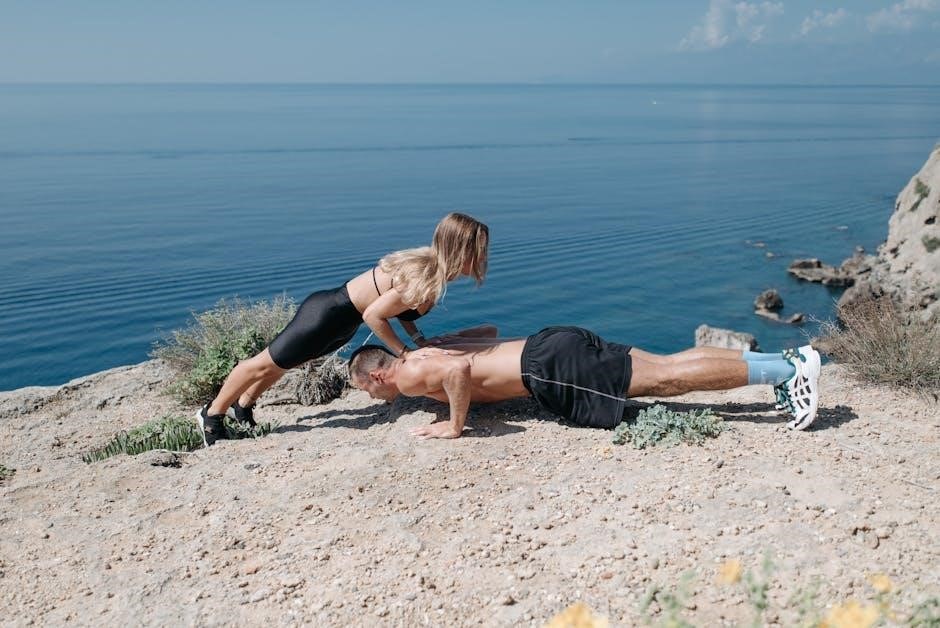Exercises for de quervains are crucial for rehabilitation, involving wrist and thumb movements, with
specific routines
and splinting to alleviate pain and strengthen muscles, as outlined in various de quervains exercises pdf resources available online today always.
Understanding De Quervain’s Disease
De Quervain’s disease is a condition that affects the tendons on the thumb side of the wrist, causing pain and tenderness, especially when forming a fist, grasping, or turning the wrist. The exact cause of De Quervain’s disease is not known, but it is thought to be related to chronic overuse of the wrist and thumb, leading to inflammation of the tendons and their surrounding sheaths. This condition is common among individuals who perform repetitive activities, such as golfers, musicians, and workers who use vibrating tools. Understanding the underlying causes and symptoms of De Quervain’s disease is essential for developing effective treatment plans, including exercises and physical therapy. The Internet provides a wealth of information on De Quervain’s disease, including de quervains exercises pdf resources that offer guidance on managing the condition and preventing further injury. By learning more about De Quervain’s disease, individuals can take steps to alleviate their symptoms and improve their overall quality of life. Regular exercise and stretching can help to reduce pain and improve mobility.

Types of Exercises for De Quervain’s
Exercises include wrist extensions, thumb stretches, and forearm rotations, as outlined in de quervains exercises pdf resources, to help alleviate pain and improve mobility and strength always online every day.
Thumb Lifts and Opposition Stretch
Thumb lifts and opposition stretch are essential exercises for de quervains, as they help to strengthen the muscles and tendons in the thumb and wrist, improving mobility and reducing pain.
These exercises can be done by placing the hand on a flat surface, lifting the thumb away from the table, and then touching the tip of the thumb to the tip of the little finger.
This opposition stretch helps to increase the range of motion in the thumb and wrist, reducing stiffness and pain.
It is recommended to start with gentle exercises and gradually increase the intensity and frequency as the pain and stiffness subside.
Regular practice of these exercises can help to improve grip strength, reduce pain, and prevent future episodes of de quervains.
By incorporating thumb lifts and opposition stretch into a daily exercise routine, individuals can manage their symptoms and improve their overall hand function, as outlined in de quervains exercises pdf resources.
These exercises are simple, yet effective, and can be done at home or in a clinical setting, making them a valuable tool for managing de quervains.
With consistent practice, individuals can experience significant improvements in their symptoms and overall quality of life.

Rehabilitation Process for De Quervain’s
Rehabilitation involves gentle exercises, splinting, and gradual progression to alleviate pain, as outlined in de quervains exercises pdf, promoting wrist and thumb healing and recovery always online today easily.
Stage 1 Exercises and Splinting
During the initial stage of rehabilitation, it is essential to wear a splint continuously for 2-3 weeks to settle the pain and inflammation. This allows the tendons to heal and reduces the risk of further irritation. The splint should be worn at all times, including during sleep, to ensure consistent support and protection. After the initial period, gentle exercises can be introduced to promote healing and strengthen the muscles. These exercises should be done slowly and smoothly, without causing any pain or discomfort. The goal of stage 1 exercises is to improve range of motion and reduce stiffness, while also promoting tendon healing. It is crucial to follow the exercises outlined in de quervains exercises pdf and to consult with a healthcare professional or physical therapist to ensure proper technique and progression. By following this stage 1 protocol, individuals can set the foundation for a successful rehabilitation and reduce the risk of future complications. Regular monitoring and adjustments to the exercise routine can help optimize the healing process.

Managing Pain During Exercises
Pain management is crucial, with exercises stopped if pain occurs, as outlined in de quervains exercises pdf resources, to prevent further injury and promote healing, using
gentle techniques always.
Easing Off Exercises and Seeking Medical Advice
When experiencing pain during exercises, it is essential to ease off and seek medical advice to prevent further injury. According to de quervains exercises pdf resources, patients should stop exercises if pain occurs and consult their doctor or physical therapist.
They will provide guidance on modifying exercises to accommodate individual needs and abilities, ensuring a safe and effective rehabilitation process.
Additionally, medical professionals can offer valuable advice on managing pain and inflammation, which is critical for successful recovery.
By seeking medical advice and easing off exercises when necessary, individuals can promote healing, prevent complications, and achieve optimal outcomes in their rehabilitation journey.
It is crucial to prioritize pain management and seek medical attention if symptoms persist or worsen, as this can impact the overall effectiveness of the rehabilitation process.
With proper medical guidance and careful exercise modification, individuals can navigate the rehabilitation process safely and efficiently.

Importance of Gradual Progression in Exercises
Gradual progression in exercises is crucial for de quervains rehabilitation, allowing muscles to adapt and reducing risk of further injury, as outlined in de quervains exercises pdf resources always online.
Examples of Typical Rehabilitation Exercises
Examples of typical rehabilitation exercises for de quervains include thumb lifts and opposition stretch, which help to strengthen the muscles and tendons in the wrist and thumb. These exercises are typically outlined in de quervains exercises pdf resources and are designed to be done slowly and gently, with a focus on gradual progression. The exercises may include touching the tip of the thumb to the tip of the little finger, holding for a few seconds, and repeating several times. Other exercises may involve gently moving the thumb away from the table, or rotating the wrist in a circular motion. It is essential to follow the instructions provided by a healthcare professional or physical therapist, and to only do the exercises that are recommended for your specific condition. By doing these exercises regularly, you can help to alleviate pain and stiffness, and improve your overall range of motion and function. Regular exercise can also help to prevent future injuries and promote long-term recovery.
